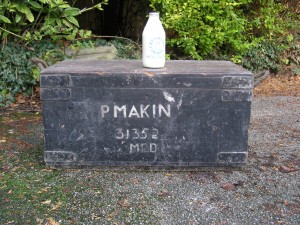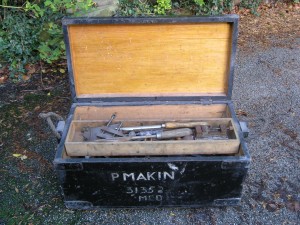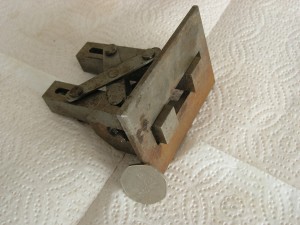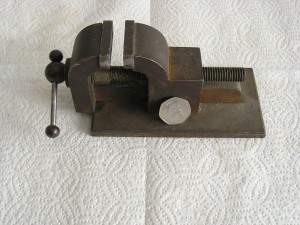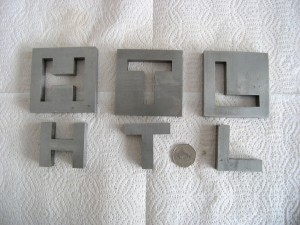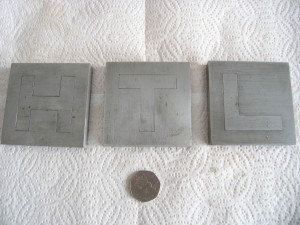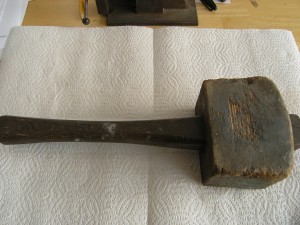What are apprenticeships?
I’ll start by looking at what an apprenticeship meant in 1953 because I believe that the current enthusiasm for apprenticeships is based on what happened 50 years ago but is far divorced from that reality. Our present leaders have little idea what an apprenticeship really entials and just because you call something an elephant it does not meant it is one. The concept of an appprenticeship goes back some 600 years to the days when there were clearly reconised trade usually organised into Guilds. To ensure continuity and maintain standards they all had apprentices. The basis of the apprenticeship was that a young man would become bonded to an employerfor some years who would ensure that he worked with a trained craftsman and would learn on the job so that he was able to work as a fully trained craftsman by the end of the apprenticeship. It was recognised that although fully trained by the end of the apprenticeship he lacked the experience of someone who had been doing the job for years and was known as a “journyman” – what a beautiful word which says it all. The key words where bonded, trained on the job and craftsman.
IN 1953 there was a clear route for those apprentices who wanted to progress from being a fitter to be a member of one of the professional bodies. The Institution of Mechanical Engineers (IMechE) in my case. This was the route choshen by most engineers seeking to make progress as there were very few engineering degree courses avaiable – this was before the red-brick explosion. The route was via ONC/HNC, then endorsements leading to Associate Membership (AMIMechE) – all requiring part time study at night school. From then on it was a matter of job progression until one reached a suitable level of responsibility when there was a professional interview at one’s place of work by two Members and if you were lucky you became a full Member (MIMechE). If you did work at a high level of responsibility there was the possibility of election to Fellow (FIMechE). Although this was a long process you did get a professional body of engineers who had a thorough practical training, deep expereince of engineering and the will and guts to succeed in their profession.
How I became an apprentice is of interest in the present climate. I had completed 5 rather unsatifactoroy years at a grammar school and although I had a good clutch of non-science O Levels I knew that I wanted to be an engineer instead of a bank manager or civil servant which seemed that traditional route out of grammar schools. My Mother had always said that “if you have a trade you will never lack work” and she quoted my father as a good example as he had been in steady employment all his working life – including the Depression. My father worked in a shipyard on the banks of the River Medway that was aprt of the group thta ran pleasure steamers on the Thames and the Medway – trips form Tower Pier to Southend or from Chatham to Hernebay or Southend. The Medway Queen is a small paddle steamer and did the trips from Chatham. In addition to keeping the ship repaired – the paddle boxes were vunerable when going alongside in a fast tide he was very fond of taking trips on her and I went along. She had horizontal steam engines to drive the paddle wheels and the engine space was open for all to see. I was totally fascinated by the site of marvellous cylinders and pistons delivering power so smoothly. I am ceratin that those trip on the Medway Queen had a subtle but very strong influence on my wish to be an engineer. I am a Member of the Medway Queen Preservation Society and am pleased to report that the newly restored Medway Queen is due to take to the waters of the Medway in the near future.
My journey to becaome an apprentice
This was September 1953 and it was the time when we had a thriving aircraft industry with planes like the Comet, Cannberra and Hunter decorating the airways and I wanted to build planes. My School thought I had gone balmy and washed their hands of me.
Where to go for help?
At that time the Ministry of Labour had a very active Youth Carreers Department and we sought help from them. I was interviewed several times by men who were clearly interested in finding me a place with a plane maker. They came home to see that scale model aircraft I had made. They were particularly interested that I had produced accurate scale models form photos in magazines and awarded me a “Special Aptitude Grant” to cover living expenses, so that I could live away from home if I got a job with one of the plane makers. So I duly wrote to plane makers with world famous names such as Vickers, DeHaviland and Handley Page. I got an invitation from Vickers to go for an interview at Brooklands, Weighbridge – a walk into aviation history. When I got there I found that I was one of some 50 potential apprentices and we were given a series of written tests during the day – just like being back at school. I can’t remember being spoken to as an individual al the time I was there. I found it very off-putting. Anyway, I subsequently had an offer of an apprenticeship starting in September 1954. That was almost a year away and I could not stand the thought of staying at school until then. So I looked elsewhere. As it turned out this was not a bad decision becuse within 10 years most of the planemakers had disappeared due to structural problems in the defence industry.
Apprenticeships in HM Royal Naval Dockyard, Chatham
My parents had encouraged me to consider taking an appreticeship in HM Dockyard Chatham – this had a very good reputation locally and meant that I could stay at home – much to my Mother’s delight. Chatham Dockyard employed about 13,000 tradesmen and had an annual intake of some 300 apprentices covering some 20 trades. This was the hight of the Cold War and the Dockyard was very busy reparing HM ships ranging from elderly WWII corvettes, to the modern Daring Class destryers and frigates, plus servicing two cruisers the Birmingham and Southampton – similar to HMs Belfast now moored on the Thames. They also maintained the remaining T-class submarines in service and built the new A-class hunter killer submarines. An additinal, and rather exciting role, was running repairs to NATO vessels – mainly American – as and when necessary. This seemed to happen at weekends and brought both a welcome addition of overtime and a large quantity of duty free Camel cigarettes into the Yard and exposure to these exotic creatures call Americans. Remember the UK was still recovering from WWII and things like food rationing were only months behind us. We did not get out much.
The Dockyard apprenticeships were some of the best in the UK. There was an annual intake of some 300 boys between 15 and 16 years old in two intakes September and January. There were two routes to entry. The first was by exam and accounted for about 125 apprentices and what was called the “Special Apptitude” route for the less academic. TheApprenticeships lasted 5 years and parents had to sign a deed saying that they would keep the applicant working for those 5 years – the signing was a very formal and somewhat frightening experience – no doubt deliberately so. The training was very thorough:-
Year One – was in the Apprentice Training Centre and concentrated on hand tools and renovating valves – more of that later.
Year Two – was in the Apprentice Machining Centre where we were taught how to operate a wide range of lathes, milling machines and shapers. We were also taught how to layout work on a surface plate.
Year Three – was spent afloat working with trained fitters on HM Ships and shore workshops. I was lucky in that I went straight to HMS Birmingham – a 6 ins Criuser – who was steaming up prior to commissioning trials. I worked in the boiler rooms with my Skipper (whose name I have forgotten) on things like setting the safety valves. More on Birmingham later.
Year Four – More of the same. I worked in submarins, frigates, food preparation maintenace, pattern making and the non-ferrous foundry.
Year Five – By now you were expected to work as a fuly fledged fitter – under light supervision. To my surprise I found myself leading a gang of 3 fitters and 6 labourers working in the gunmounting group, mainly on shell and a/s mortor hoists. It was an interesting experience as my team were all old enough to be my father or grandfather. To their credit, they treated me very kindly.
The Dockyard College ran in parallel with the practical training. The exam entry did two days and two nights a week for tree years. At the end of the third year the top 25 were selected to serve an extra year and were know as “Fourth Year Upper Apprentices” – a great honour that singled you out for greater things. You also got a silver emboidered blazer badge to wear with pride – I still have mine tucked away in a drawer for safekeeping. The courses covered both mechanical and electrical engineering and were somewhere between HNC and pass degree level. The rest of the years intake did a course up to ONC level.
So if you were an Upper School Apprentice for the first four years you did three days working as a fitter and two days and two nights at the College – plus lots of homework. It’s hard to underestimate the value of this appraoch to learning one’s profession and the Yard was years ahead of what became “student apprenticeships”.
We started work at 07.00 and finished at 17.00, apart from Fridays, when we finished at 16.00. The first year’s pay was 42 shillings and 8 pence. Not a fortune. Its hard to believe it now; but the civilian side of the ‘Yard was run with strict naval discipline. It was a crime to be late for work – punished by a 6p fine plus docking of pay- because if you were late “you had missed the boat”. The spirit of Lord Nelson ran deep in the 1950′s Yard.
There were two other Naval Dockyards with similar schemes – Portsmouth and Devonport.
I got there!
I am running ahead of myself. In the autumn of 1953 I took the Dockyard entrance exam – passing out at the top. My father and I were invited to trade selection day. This turned out to be a daunting business. It was held in Number 3 Canteen – a huge hanger like building, the biggest I had ever been in. The format was a simple one. There was a huge blackboard erected at one end with all of the vacancies bt trade chalked on it. I can remember that there was 1 Station Fitter, 12 or so engine and elctrical fitters etc. Some dozen trades. Selection was done by your position in the entrance exam. So I had first choice. It was assumed that I would choose the Station Fitter job as this was regarded as the top trade and there was some consternation when I chose Engine Fitter - although it delighted the representatives from the Engineering Branch. The number of vacancies were reduced on the blackboard as the candidates made their choices until all the positions had been filled. Afterwards, my father and I signed my indentures – a solem business – and I was a fully fledged Engine Fitter Apprentice. Hooray.
I started my life as an engine fitter apprentice on 4th January 1954. Number 31352 HM Dockyard Chatham. The first year training centre was on the mezzanine floor of the Factory – huge machine shop near Number One Basin. The Centre had workbenches equiped with vices for about 20 apprentices and a small lecture room. Unfortunately, it was just to one side of the big engine test bed where the new types of submarine diesel engines were tested – some times running for a week or more. We went home with the noise still ringing in our ears – a sign that it was doing permanent damage to our hearing.
We were allocated a vice and supplied with a large tool box and a selection of handtools such as files, hammers, chisels, feeler gauges and the most useful tool of all – a 6 inch steel rule. Universally used as a scraper, a screwdriver and to stir one’s tea. I still have mine. We were also given two boiler suits, which when new, were and orange/brown, but lost most of their colour when washed sevral times. We could not wait for them to loose their colour and look like old boys. The tool box was made to withstand the rigors of work aflaot and will withstand a nuclear blast. I still have mine as shown below.
We had two apprentice instructors to look after us. Rumour had it that they were there becuase they were too sick and elderly to work afloat. It always seemed to me that looking after a dozen or so lively teenagers was no sinecure. But to our eyes they looked very ancient but they were masters of their craft and they taught us all there was to know about using handtools – and that is a lot. It is to my regret that I cannot remember their names. I owe them a lot.
We were thron in the deep end and given a whole series of tasks and test pieces that developed our skills. The first one was to prepare an inch cube form a short piece of round bar and then cut a hole in a piece of three inch sqare by half an inch thick mild steel so that the cube fitted tightly into the hole on all sides.
This is work in progress – more to come.
